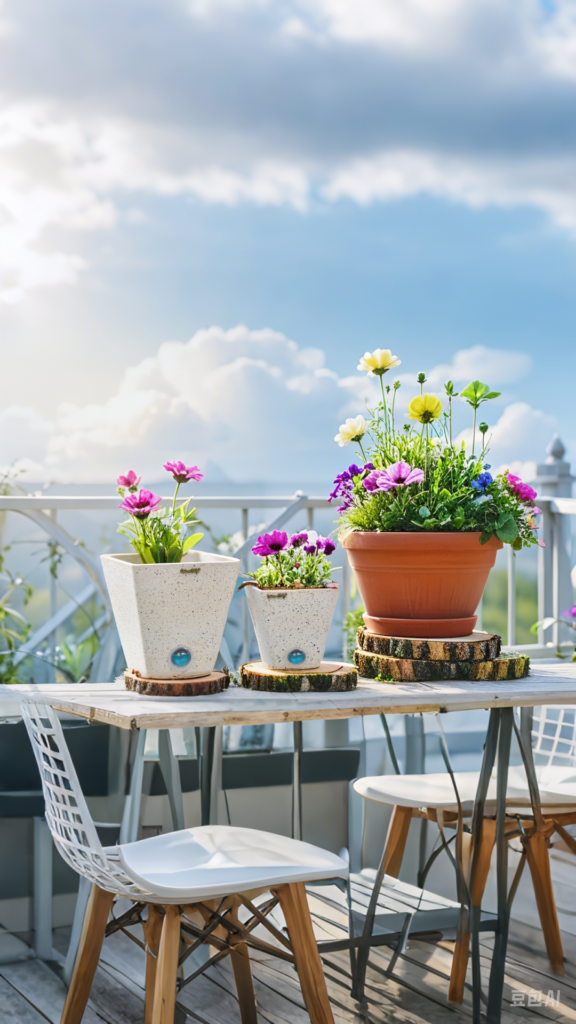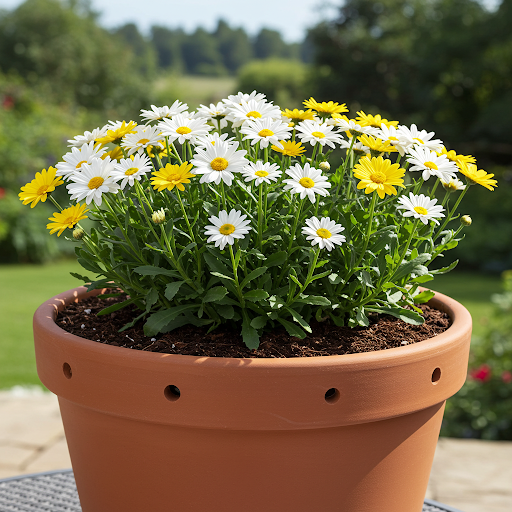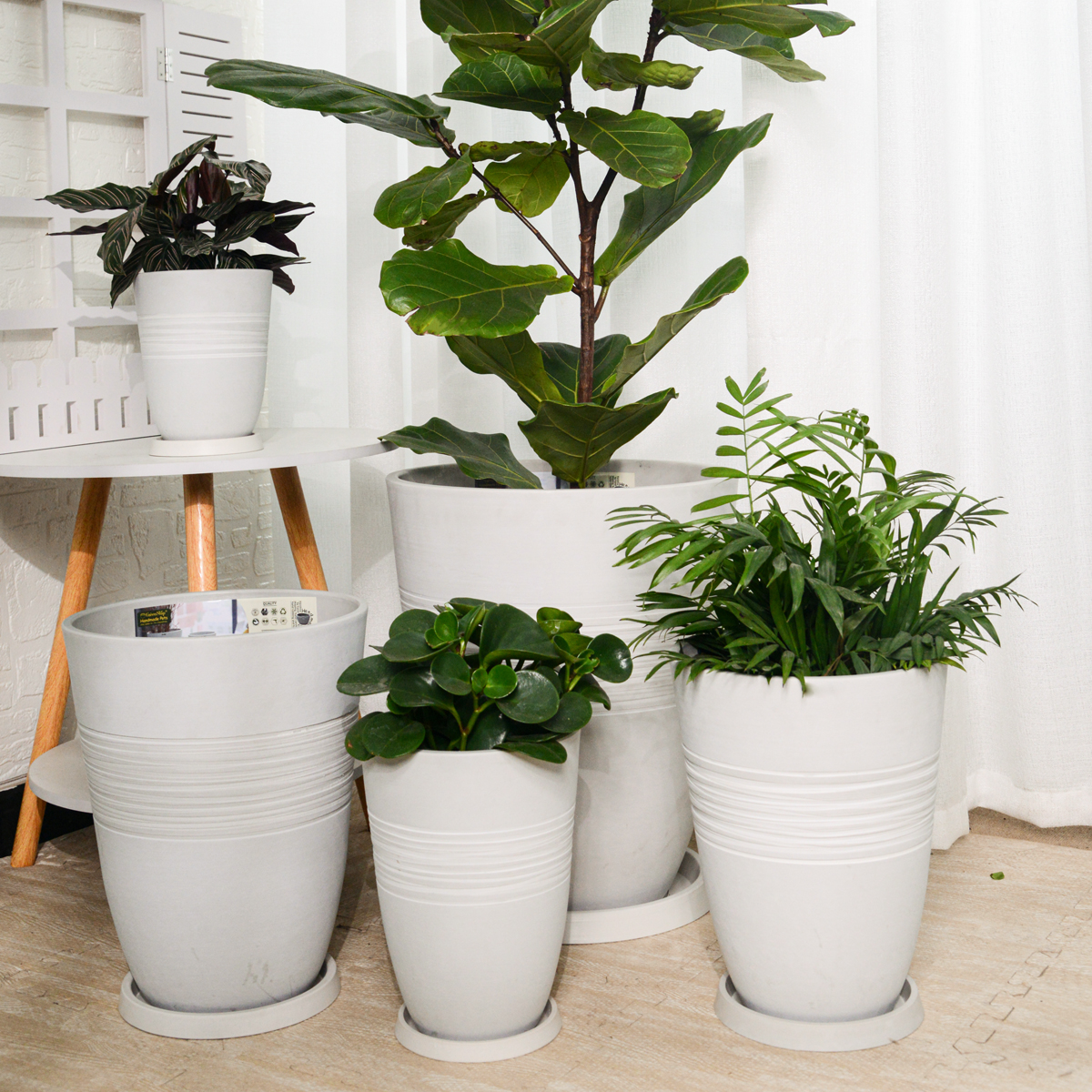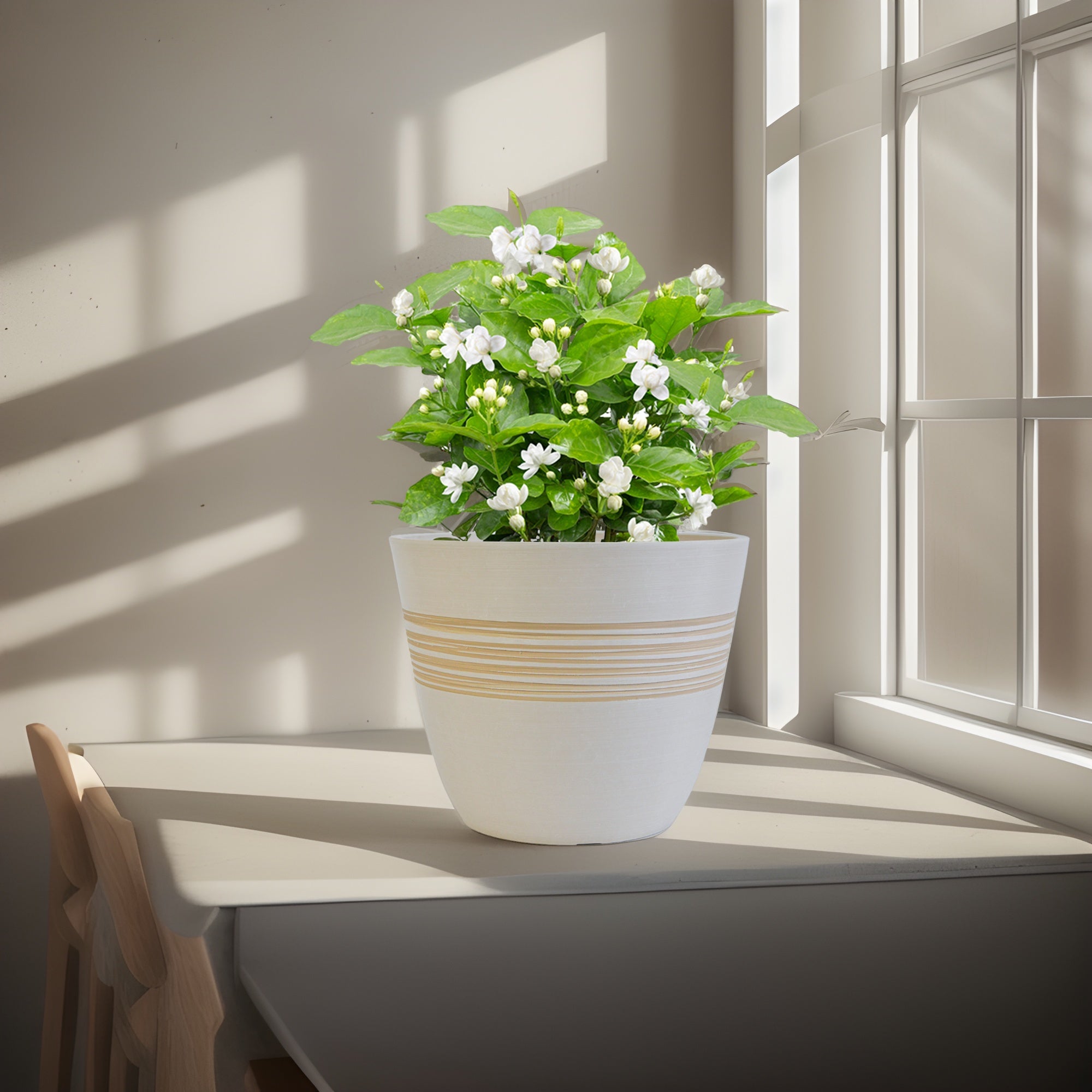Daisies in Pots: The Complete Guide to Growing Cheerful Daisies Outdoors in Containers
Want to bring a touch of classic charm and sunny cheer to your patio, balcony, or garden? Daisies, with their iconic white petals and bright yellow centers, are a beloved and easy-to-grow choice for outdoor container gardening. Symbolizing innocence and joy, daisies are perfect for adding a touch of cottage garden beauty to any outdoor space. This comprehensive guide will provide you with everything you need to know to grow daisies successfully in outdoor pots, from selecting the best varieties and containers to mastering essential care techniques for a season filled with daisy delight.

Daisies
What are Daisies (Genus Bellis, Leucanthemum, and others)?
Daisies are a common name encompassing a wide variety of flowering plants in the Asteraceae family, characterized by their distinctive composite flower heads with a central disk of tiny florets surrounded by ray florets (petals). The most familiar daisies belong to the genera Bellis (e.g., English Daisy, Bellis perennis) and Leucanthemum (e.g., Shasta Daisy, Leucanthemum × superbum; Oxeye Daisy, Leucanthemum vulgare), but the term “daisy” is also applied to many other related plants with similar flower forms. Daisy flowers are typically white with a yellow center, but cultivars are available in shades of pink, red, and yellow, and in single, semi-double, and double forms. Daisies can be annuals, biennials, or perennials, depending on the species and variety. They are generally low-growing plants, ranging in height from a few inches to a few feet, depending on the type. Daisies are cherished for their cheerful appearance, simple elegance, long blooming season, easy care, and attractiveness to pollinators, making them a classic and versatile choice for gardens and containers worldwide.
Are Daisies Good for Outdoor Pots?
Yes, Daisies are exceptionally well-suited for outdoor pots and container gardening. Their compact growth habits, long blooming season, and adaptability to various conditions make them ideal for filling pots, window boxes, hanging baskets, and mixed container arrangements with cheerful color. Daisies thrive in sunny locations and bloom profusely throughout the spring, summer, and even into fall, providing a long-lasting and delightful floral display in containers. Their low-maintenance nature and classic beauty make them a fantastic and rewarding choice for container gardens of all styles, especially for adding a touch of cottage charm and sunny hues to patios, balconies, and decks.
Ideal Growing Conditions for Daisies in Pots:
Types of Daisies for Pots: Many daisy types are excellent for pots, but consider your desired look, pot size, and climate when choosing:
- English Daisies (Bellis perennis): (e.g., ‘Bellissima Series’, ‘Tasso Series’, ‘Pomponette’) – Compact and low-growing, typically 4-8 inches tall, often grown as biennials or short-lived perennials. Perfect for small pots, window boxes, and edging. Known for their small, button-like flowers in white, pink, and red, and their early spring to summer blooming. Excellent for adding delicate color and texture to spring containers.
- Shasta Daisies (Leucanthemum × superbum): (e.g., ‘Becky’, ‘Snowcap’, ‘Alaska’, ‘Crazy Daisy’) – Classic white daisies with larger flowers, typically reaching 1-3 feet tall, and are long-lived perennials. Suitable for medium to large pots and mixed arrangements. Known for their classic daisy look, sturdy stems, and long summer blooming. Good for providing height and traditional daisy charm in containers. Choose more compact Shasta Daisy varieties for pots.
- African Daisies (Osteospermum and Dimorphotheca): (e.g., Osteospermum ‘Symphony Series’, Dimorphotheca pluvialis) – Technically not true daisies, but have a similar daisy-like flower form and are often called daisies. Available in a wide range of colors, including white, yellow, orange, pink, purple, and bi-colors. Can be annuals or tender perennials, depending on climate. Good for pots, window boxes, and mixed containers, adding vibrant color and daisy-like blooms throughout the warm season. Choose compact varieties for pots.
- Gloriosa Daisies/Black-Eyed Susans (Rudbeckia hirta): (e.g., Rudbeckia hirta ‘Prairie Sun’, ‘Indian Summer’) – While often called daisies, they belong to Rudbeckia genus. Known for their golden yellow to orange daisy-like flowers with dark brown centers. Typically taller, reaching 2-3 feet, and are annuals or biennials. Can be grown in larger pots for a bolder, more rustic daisy display. Choose compact Rudbeckia hirta varieties for container growing.
- Gerbera Daisies (Gerbera jamesonii): (e.g., ‘Festival Series’, ‘Pasta Series’) – Known for their large, showy daisy flowers in a vast array of colors, including vibrant reds, oranges, yellows, pinks, and whites. Often grown as annuals or tender perennials. Suitable for individual pots or mixed containers, adding bold color and dramatic daisy blooms. Choose compact Gerbera Daisy varieties for pots.
Light: Daisies thrive in full sun. They bloom best and produce the most vibrant colors in full sun (at least 6-8 hours of direct sunlight per day). Choose a sunny location for your daisy containers, such as a south-facing patio, balcony, or garden bed. In very shady locations, daisies may produce fewer blooms and become leggy. While they can tolerate some light afternoon shade, especially in hot summer climates, full sun is always preferred for optimal daisy performance.
Soil: Daisies need well-draining soil that is moderately fertile. Use a high-quality potting mix specifically formulated for containers or flowers. Amend potting mix with compost to improve fertility and drainage. Avoid heavy, compacted soil or garden soil in pots, as they can become waterlogged. A slightly acidic to neutral pH (around 6.0-7.0) is ideal for most daisies. Good drainage is key to preventing root rot, especially in pots.
Watering: Daisies prefer consistently moist soil, especially when establishing and blooming, but are relatively drought-tolerant once established. Water thoroughly when the top inch of soil feels slightly dry. Water deeply until water drains out of the drainage holes. Allow the soil surface to dry slightly between waterings. Avoid overwatering and soggy soil, which can lead to root rot. Watering frequency will depend on weather conditions, light levels, pot size, and plant size. During hot, sunny, or windy weather, you may need to water more frequently. Check soil moisture regularly and adjust watering accordingly. Water at the base of the plant to keep foliage and flowers dry and help prevent fungal diseases.
Temperature: Daisies are generally cool-season plants that thrive in moderate temperatures. They perform best in temperatures between 60°F to 75°F (15°C to 24°C). They are tolerant of light frost but are damaged by hard freezes. Plant daisies outdoors in spring after the last frost in your area, or start seeds indoors 6-8 weeks before the last frost for earlier blooms. They bloom best in cooler periods of spring and fall, and may slow down or stop blooming in the heat of summer, especially in very hot climates. Providing some afternoon shade and consistent moisture can help them tolerate summer heat. Some daisy types, like Shasta Daisies, are more heat-tolerant than others.
Fertilizer: Daisies are moderate feeders and benefit from regular fertilization, especially when grown in pots where nutrients can leach out more quickly. Fertilize every 4-6 weeks during the blooming season to encourage continuous flowering. Use a balanced liquid fertilizer (e.g., 10-10-10 or 20-20-20) diluted to half strength, or a fertilizer specifically formulated for flowering annuals or perennials. Avoid over-fertilizing, which can lead to leggy growth and fewer flowers. For English Daisies, which are often biennials, fertilization may be less critical than for longer-blooming perennial types like Shasta Daisies.
Choosing the Right Pots for Daisies:
Suitable Pot Types: Daisies are versatile and can be grown in various pot types, including terracotta, ceramic, plastic, resin, metal, and even repurposed containers. Consider these factors when selecting pot types for daisies:
- Terracotta Pots: Porous, allow good aeration and drainage, and aesthetically classic. Terracotta is a good choice for daisies as it helps prevent overwatering. However, terracotta pots also dry out more quickly, so monitor soil moisture, especially in hot weather.
- Ceramic Pots: Available in many decorative styles, can add a decorative element to your container garden, and retain moisture reasonably well. Ensure good drainage. Choose glazed or unglazed ceramic pots based on your desired moisture retention.
- Plastic Pots: Lightweight, inexpensive, retain moisture well, and are available in various colors and styles. Excellent choice for daisies, especially for moisture-loving types or in hot climates where moisture retention is beneficial. Choose good quality plastic pots with drainage holes.
- Resin Pots: Lightweight, durable, available in various styles mimicking terracotta or ceramic, and offer a balance of drainage and moisture retention. A good alternative to heavy ceramic pots and often more durable than terracotta.
- Metal Pots & Containers: Can add a modern or rustic touch. Ensure metal pots have drainage holes and are lined if necessary to prevent rust and protect roots from excessive heat in sunny locations.
- Repurposed Containers: Daisies can be charmingly grown in repurposed items like buckets, tubs, watering cans, or even old boots, as long as they provide drainage.
Drainage: Good drainage is essential for daisies to prevent root rot. Ensure your chosen pot has drainage holes at the bottom. Avoid pots without drainage holes. Adding a layer of gravel or pot shards at the base of the pot is generally not necessary if using a well-draining potting mix, but can be done for extra precaution, especially in heavier pots. Elevating pots slightly can improve drainage and air circulation around the base.

Daisies
Pot Size: Choose pot sizes appropriate for the type and mature size of the daisy you are planting.
- English Daisies: For compact English Daisies, small pots that are 6-8 inches in diameter are suitable for individual plants. For mass plantings or window boxes, use larger containers or window boxes with spacing of about 6-8 inches between plants.
- Shasta Daisies: For Shasta Daisies, use pots that are 10-12 inches in diameter for individual plants. For larger, bushier displays or multiple plants, use pots that are 12-18 inches or larger, or long planters. Choose wider pots to accommodate their spreading habit.
- African Daisies: For African Daisies, pots that are 8-10 inches in diameter are generally suitable for individual plants. For fuller displays or mixed plantings, use pots that are 10-14 inches or larger, or window boxes.
- Gerbera Daisies: For Gerbera Daisies, use pots that are 8-10 inches in diameter for individual plants. Ensure good drainage as Gerbera Daisies are susceptible to root rot if kept too wet.
- Depth: Ensure pots are at least 6-8 inches deep for English Daisies, and 8-12 inches deep for Shasta Daisies, African Daisies, and Gerbera Daisies to provide adequate root space.
Color and Style: Choose pot colors and styles that complement your daisy blooms and your outdoor décor. Classic terracotta pots enhance the cottage garden charm of daisies. Brightly colored pots can create a more cheerful and playful display. Neutral pots in white, gray, or black can provide a clean and modern backdrop. Consider the overall style of your patio or garden and choose pots that harmonize with the surroundings.
Essential Care Tips for Thriving Daisies in Outdoor Pots:
- Watering: “Water When Top Inch of Soil is Dry, Avoid Overwatering”. Water thoroughly when the top inch of soil feels slightly dry. Water deeply until water drains from drainage holes. Allow soil surface to dry slightly between waterings. Avoid overwatering and soggy soil. Water more frequently during hot, sunny, or windy weather.
- Sunlight: Provide Full Sun (6-8+ Hours Daily). Place daisy pots in a location that receives full sun for best blooming and healthy growth.
- Fertilizing: Feed Every 4-6 Weeks During Blooming Season. Fertilize every 4-6 weeks during the blooming season with a balanced liquid fertilizer or flowering plant fertilizer to encourage continuous blooming. Avoid over-fertilizing.
- Deadheading (Encourage More Blooms & Tidiness): Deadhead spent or faded flowers regularly to encourage more blooms and keep plants looking tidy. Pinch or snip off dead flower heads right below the flower. Regular deadheading promotes continuous flowering in most daisy types, especially Shasta Daisies and African Daisies.
- Dividing Perennials (Every 2-3 Years for Shasta Daisies): Shasta Daisies, being perennials, benefit from division every 2-3 years to prevent overcrowding and rejuvenate plants. Divide clumps in spring or fall, and replant divisions in fresh potting mix in pots.
- Pest and Disease Control: Daisies are generally relatively pest and disease-resistant, but monitor for common pests like aphids, spider mites, and slugs/snails. Fungal diseases like powdery mildew and root rot can occur, especially in overly humid or wet conditions, or with poor air circulation. Ensure good air circulation by spacing plants adequately, avoid overcrowding, water at the base of the plant, and provide good drainage. Treat any pest or disease issues promptly with insecticidal soap, horticultural oil, neem oil, or appropriate fungicides if necessary.
Popular Daisy Cultivars for Pots (by Type):
- English Daisies (Bellis perennis): ‘Bellissima Series’, ‘Tasso Series’, ‘Pomponette’, ‘Habanera Series’, ‘Galaxy Series’
- Shasta Daisies (Leucanthemum × superbum): ‘Becky’, ‘Snowcap’, ‘Alaska’, ‘Crazy Daisy’, ‘Banana Cream’, ‘Real
KC2-11VH
By greenship|2024-08-16T06:19:28+00:00August 16, 2024|Categories: Hand-carving Series|
KC2-21G
By greenship|2024-08-13T06:19:08+00:00August 13, 2024|Categories: Hand-carving Series|
11TH
By greenship|2024-08-13T02:50:25+00:00August 13, 2024|Categories: Hand-carving Series|
HS
By greenship|2024-08-13T06:45:17+00:00August 13, 2024|Categories: Hand-carving Series|
11V
By greenship|2024-08-13T03:05:48+00:00August 13, 2024|Categories: Hand-carving Series|
Planter for Indoor Outdoor Plants, Set of 2 Modern Decorative Plant Pots with Drainage Hole, Decorative Flower Pots
By greenship-seo|2025-04-10T07:46:01+00:00January 9, 2025|Categories: Hand-carving Series|Tags: Decorative Flower Pots, Self-Watering Pots|






